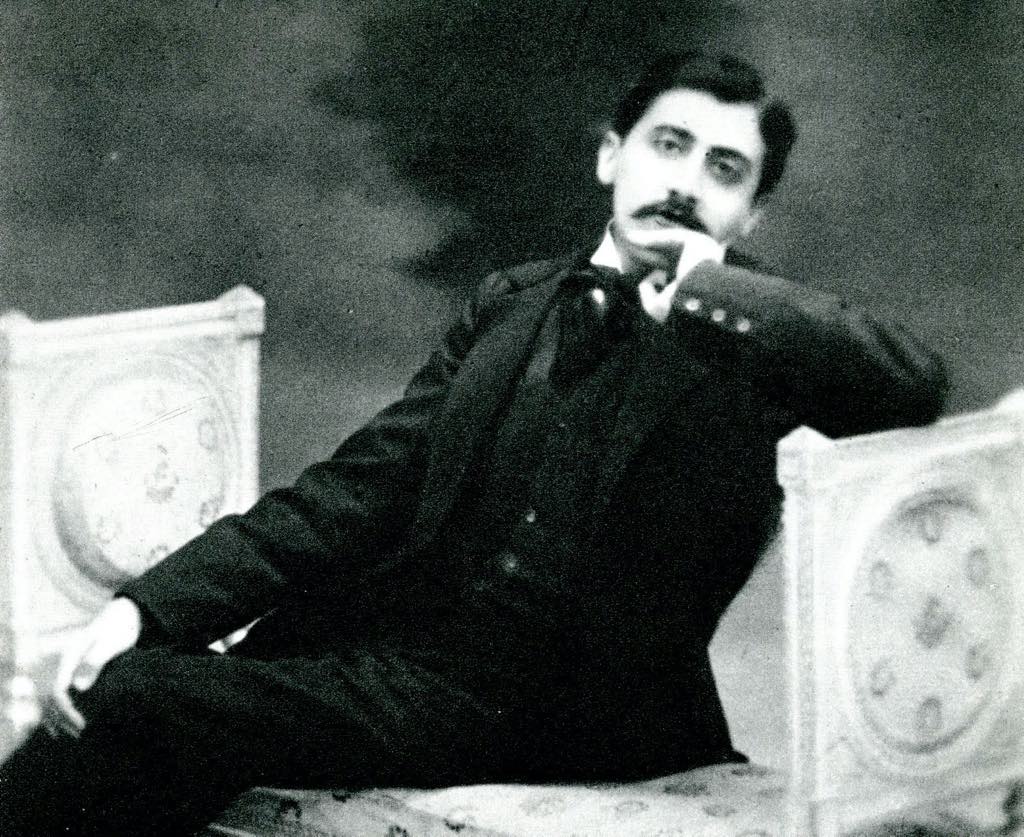
The writer Marcel Proust put on a private concert at the Paris Ritz on July 1, 1907 for a select group of friends and leading lights of Parisian high society. The evening appears to have been not only a musical and social triumph but also certainly a kind of study session for the eagle-eyed writer that would inform scenes depicting such musical salons in his masterpiece, À la Recherche du Temps Perdu (In Search of Lost Time).
Now, on a delightful new recording, Proust, le Concert Retrouvé (Harmonia Mundi), Théotime Langlois de Swarte (violin) and Tanguy de Williencourt (piano), whose own glorious names would not look out of place on the guest list of one of the salons described by Proust in his lengthy novel, have attempted to recreate that evening in 1907. To add to the sense of authenticity, the performers play on historical instruments from the Paris Musée de la Musique: Stradivari’s “Davidoff” violin from 1708 and an 1891 Érard Grand Piano.
The 62-year-old composer Gabriel Fauré, who was to have been the star performer of his own music at Proust’s soirée, withdrew at a late stage because of illness, leaving Proust scrambling to find a replacement, which he duly did in the form of Édouard Risler, who had just been named Professor of Piano at the Paris Conservatoire. Fauré’s companion Marguerite Hasselmans and violinist Maurice Hayot had already been engaged to perform Fauré’s Violin Sonata No 1 in A Major.
Writing two days later to his friend and sometime lover Reynaldo Hahn, Proust mentioned the fact that the last-minute arrival of Risler as solo pianist had meant that music by Hahn himself and the Hungarian composer Franz Liszt had been removed from the program, but he then proceeded to give a list of the music played that night. It is worth reproducing exactly what Proust listed and the performers who played, as it shows the eclectic mixture of musical styles, ranging from the early 18th century (François Couperin) to 19th-century grand opera (Richard Wagner) to the music of Fauré himself:
Sonata for violin and piano by Fauré
(Hayot Hasselmans)
Risler: Andante by Beethoven
In the Evening (I think) by Schumann
Prelude by Chopin
Overture to the Mastersingers
Idylle by Chabrier
Barricades Mystérieuses by Couperin
Nocturne by Fauré
The death of Yseult
Berceuse by Fauré, played by Hayot and Hasselmans
Although in some respects, de Swarte and de Williencourt miss a trick by not replicating the exact program mentioned by Proust (Beethoven, Chabrier and Wagner’s Mastersingers do not appear on the album), they do reimagine some of the works that Proust might originally have wanted by opening and concluding the recital with instrumental transcriptions of songs by Hahn and including Liszt’s arrangement for piano of Wagner’s “Liebestod.” As true to performance practices of the time as instrumental transcriptions of songs are, and as beautifully performed as they are by both instrumentalists, I missed hearing the original vocal renditions of Hahn’s perfect miniatures “A Chloris” and “L’Heure Exquise.”
As on the evening itself, Fauré’s four-movement violin sonata takes center-stage on this recording, with both players giving fully committed performances. The fast-paced scherzo of the third movement in particular must have shown off the virtuosity of Hayot and Hasselmans as it certainly does their 21st-century equivalents.
The experience of listening to the two instruments is fascinating. The Stradivarius is, as one might expect, velvet-toned and a joy to hear, but for the purpose of recreating the 1907 concert, the sound of the Érato piano is even more interesting. With the proliferation of historically informed music since the 1980s influencing our expectations, it came as a particular revelation to hear the Couperin piece (written in 1717 for harpsichord) played on a late 19th-century piano, making it sound (as it surely must have for the Proustian salon audience) much more like a late-Romantic piece than a Baroque jewel.
With the imminent publication by Gallimard of 75 unpublished pages written by Proust when he was preparing his masterpiece, this excellent recording contributes to the interest that the author continues to generate in all art forms. If you get this album, you, too, can imagine yourself sitting next to “Mesdames de Brantes, de Briey, d’Haussonville, de Ludre, de Noailles” and “M. et Mme de Clermont Tonnerre” (as mentioned by Proust in his letter to Hahn) at Proust’s exquisite musical soirée.
Nick Hammond’s latest book, The Powers of Sound and Song in Early Modern Paris, is now available in paperback and as an e-book here and from online vendors.
